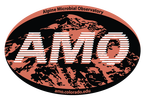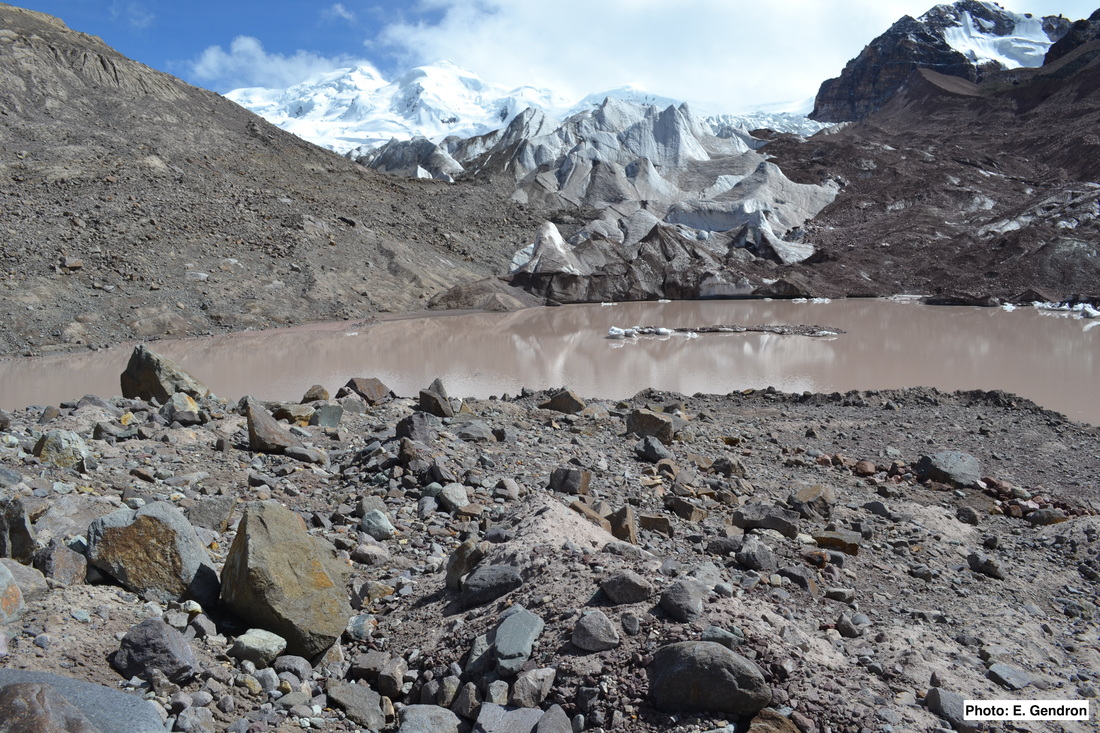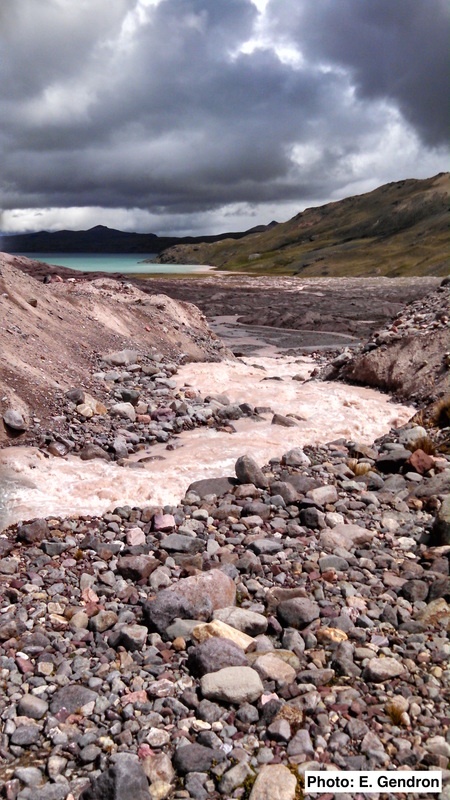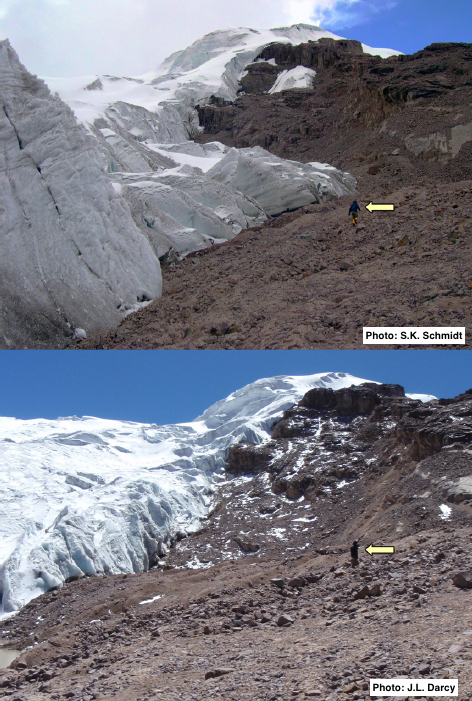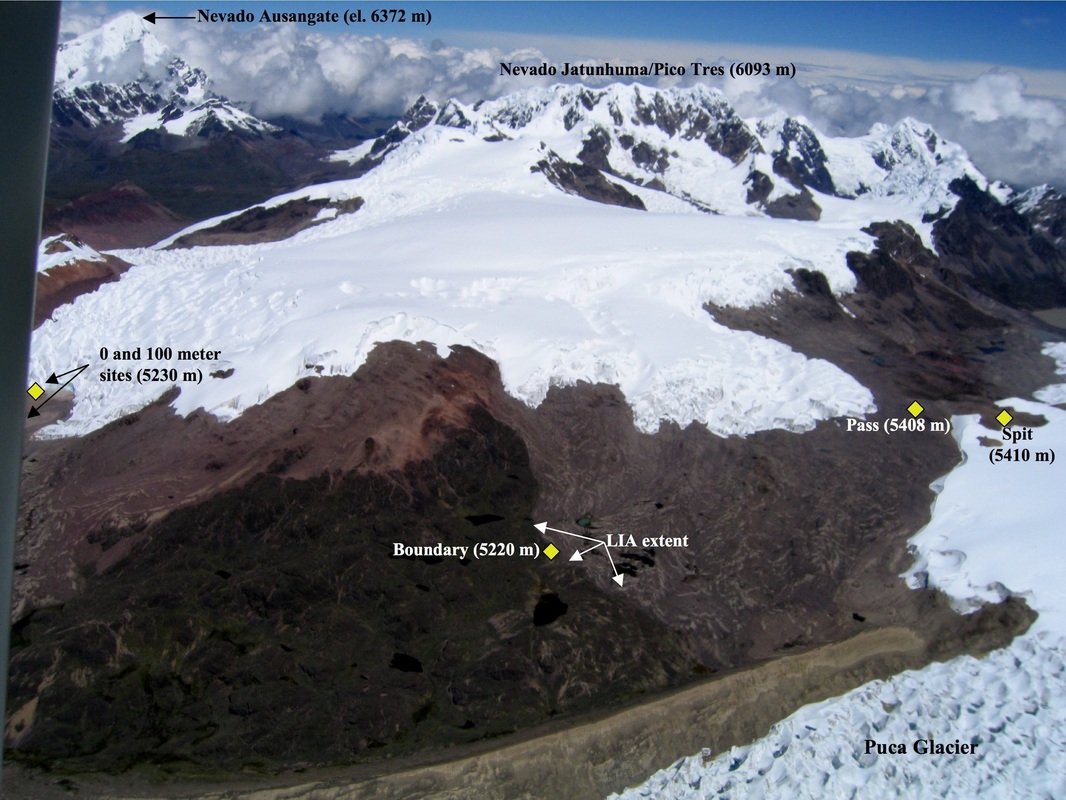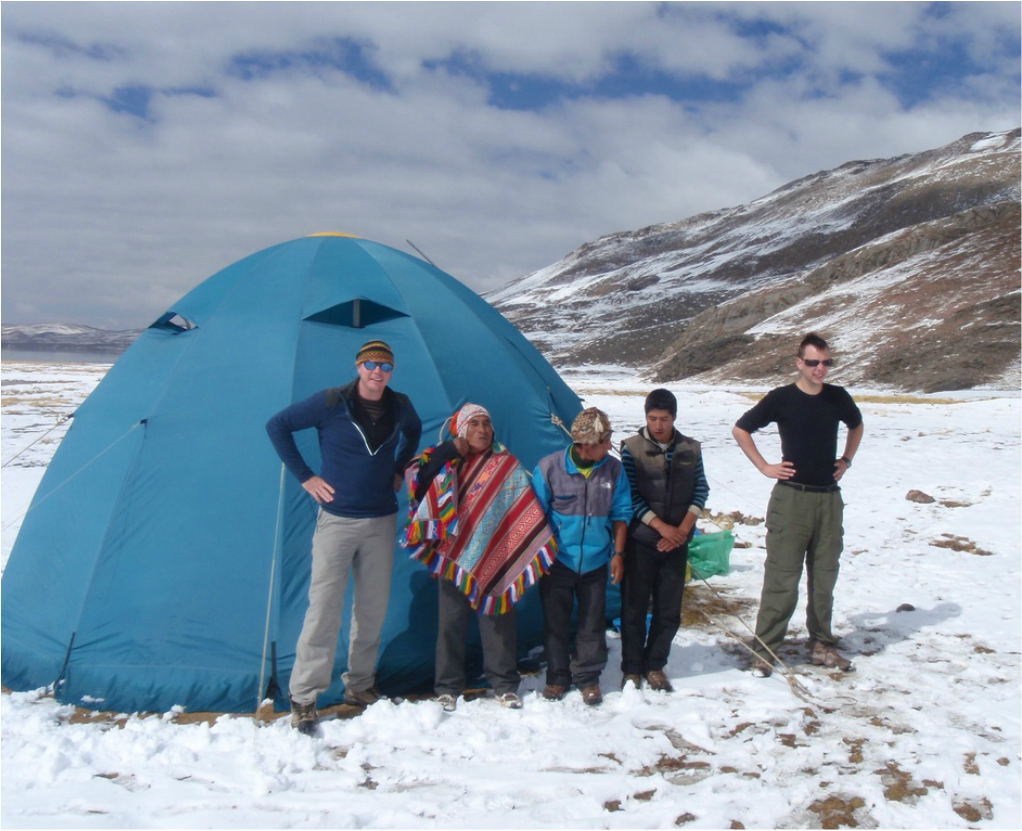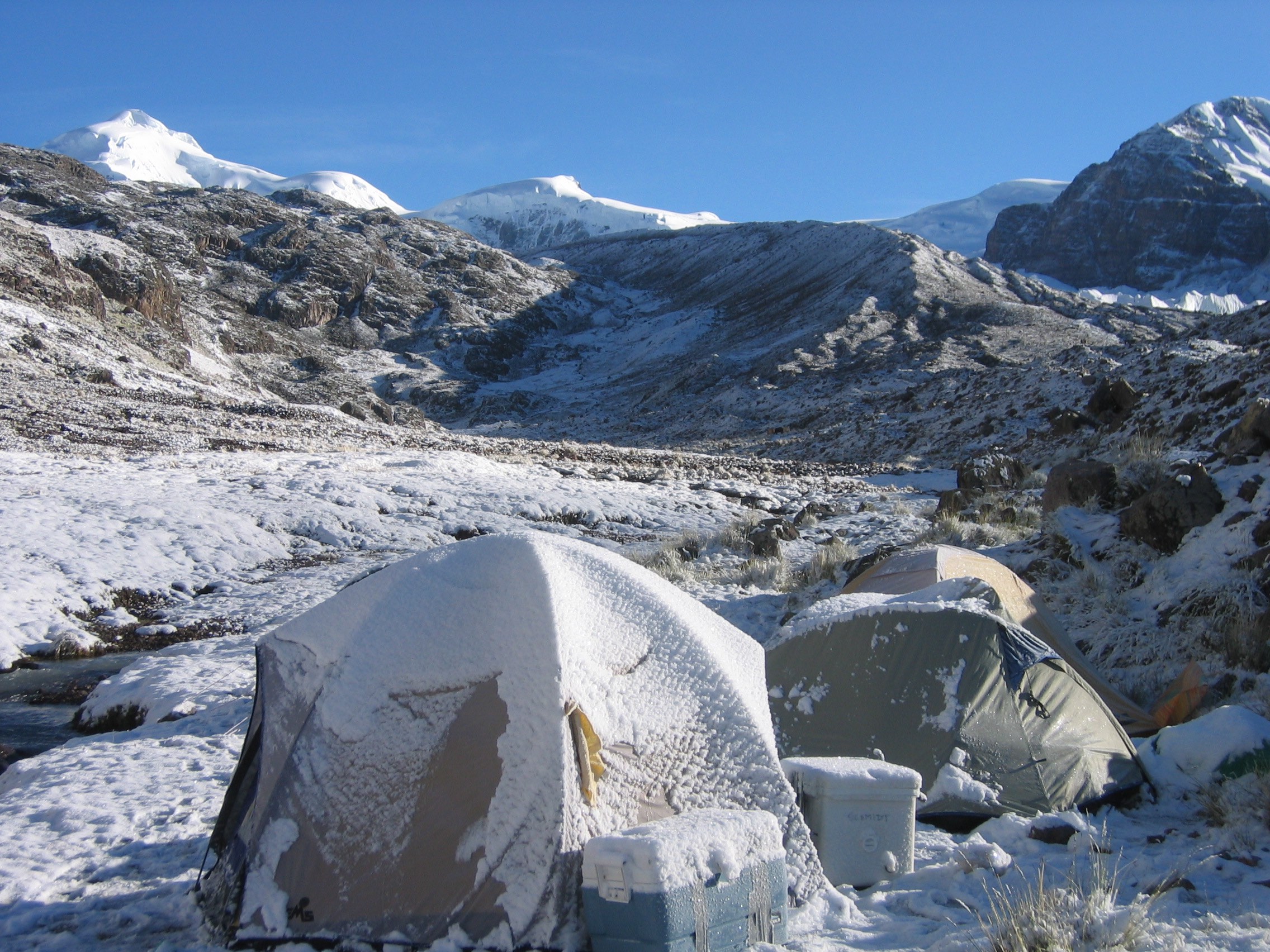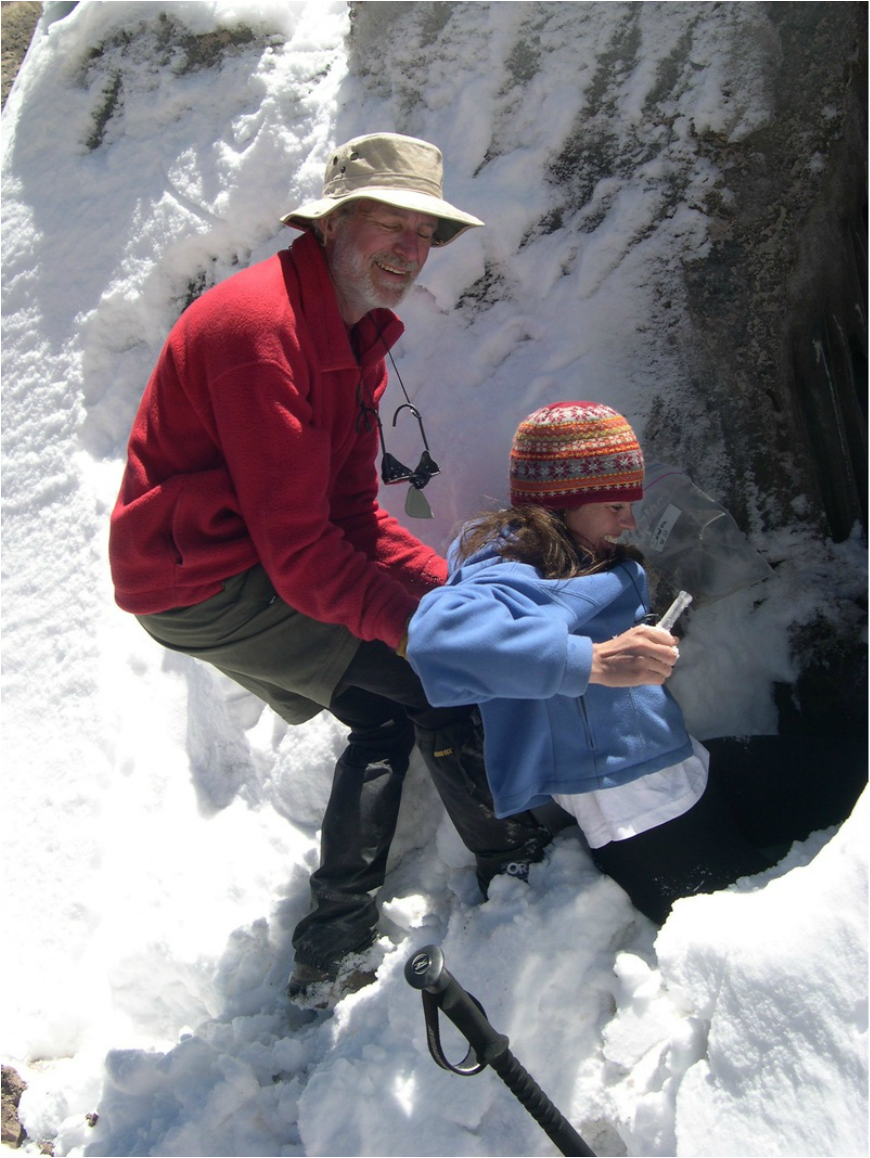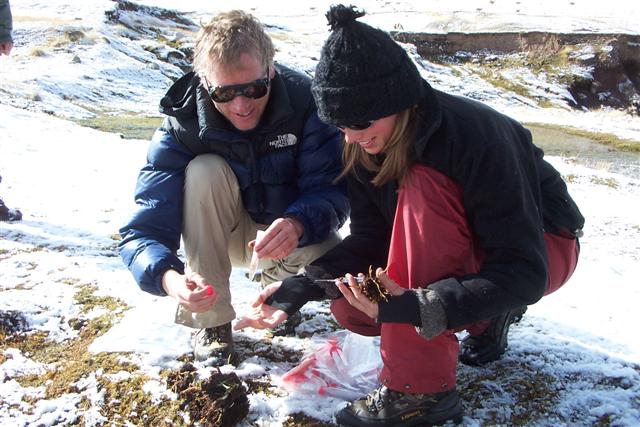The geographic setting and climatic conditions of the Sibinacocha Watershed (Cordillera Vilcanota, S.E. Perú) make it an ideal location to study how life has adapted to high elevations. Glaciers are rapidly retreating here, leaving behind previously ice-covered lands that are slowly being colonized by microbes and plants (Nemerget et al. 2007, Schmidt et al. 2008).
We have studied ecological succession at this site since 2001, and current work is focused on understanding:
1) What environmental variables control the rate of microbial and plant colonization of soils at this site
2) The survival and functioning of microbes during extreme freeze-thaw cycles.
3) The mechanisms and patterns of microbial community assembly during primary succession.
4) Microbial diversity of recently formed lakes and ponds across this rapidly evolving landscape.
We have studied ecological succession at this site since 2001, and current work is focused on understanding:
1) What environmental variables control the rate of microbial and plant colonization of soils at this site
2) The survival and functioning of microbes during extreme freeze-thaw cycles.
3) The mechanisms and patterns of microbial community assembly during primary succession.
4) Microbial diversity of recently formed lakes and ponds across this rapidly evolving landscape.
|
Glacial retreat in the Sibinacocha watershed, 2005 (top) and 2010 (bottom). This ice sheet had retreated about 100 meters in 5 years. Liz Costello is pictured in the 2005 photo and Andrew King is standing in the exact same spot in the 2010 photo.
Photos are from Molecular Ecology vol. 23: 254-258 (2014) [Enhanced Reprint]. |
|
Aerial view of Sibinacocha watershed. The highest point (upper left) is the sacred mountain Ausangate, the highest peak in the Cordillera Vilcanota. LIA refers to the little ice age boundary. This photo originally appeared in Extremophiles vol. 13: 807-816 (2009).
[Reprint] |
|
Al Meyer pulling Diana Nemergut out of crevasse, Puca Glacier terminus, August 2003. This expedition provided the data for Diana's ground-breaking study of microbial succession [Reprint] |
|
Steve and Cheyenne Wiseman sampling mycorrhizal fungi following the blizzard of July 2002 in the Cordillera, Vilcanota, Perú. Data from this expedition and the expedition in 2003 constituted Cheyenne's honor's thesis, which was later included in this publication [Reprint] |
